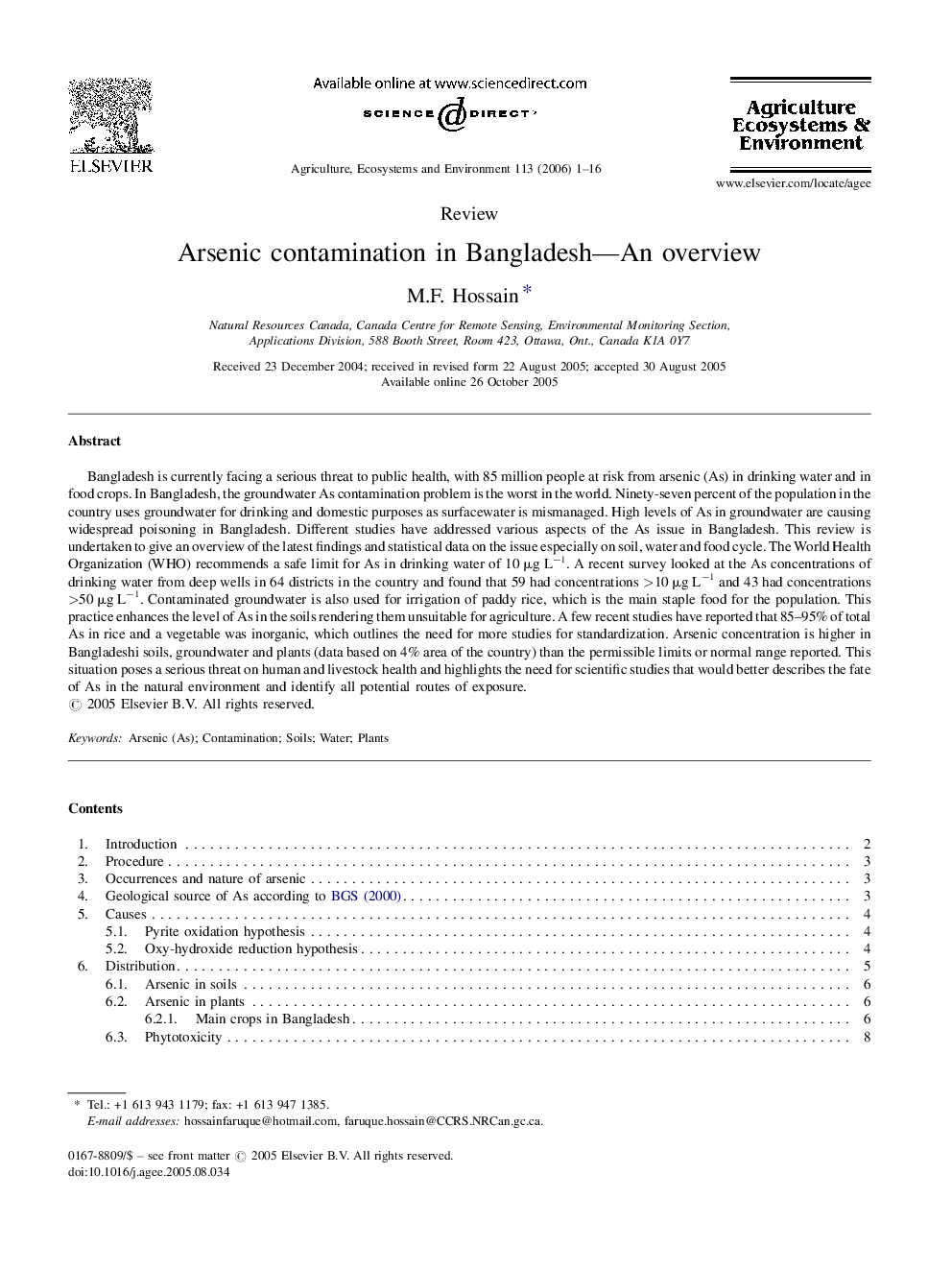| Article ID | Journal | Published Year | Pages | File Type |
|---|---|---|---|---|
| 2415952 | Agriculture, Ecosystems & Environment | 2006 | 16 Pages |
Bangladesh is currently facing a serious threat to public health, with 85 million people at risk from arsenic (As) in drinking water and in food crops. In Bangladesh, the groundwater As contamination problem is the worst in the world. Ninety-seven percent of the population in the country uses groundwater for drinking and domestic purposes as surfacewater is mismanaged. High levels of As in groundwater are causing widespread poisoning in Bangladesh. Different studies have addressed various aspects of the As issue in Bangladesh. This review is undertaken to give an overview of the latest findings and statistical data on the issue especially on soil, water and food cycle. The World Health Organization (WHO) recommends a safe limit for As in drinking water of 10 μg L−1. A recent survey looked at the As concentrations of drinking water from deep wells in 64 districts in the country and found that 59 had concentrations >10 μg L−1 and 43 had concentrations >50 μg L−1. Contaminated groundwater is also used for irrigation of paddy rice, which is the main staple food for the population. This practice enhances the level of As in the soils rendering them unsuitable for agriculture. A few recent studies have reported that 85–95% of total As in rice and a vegetable was inorganic, which outlines the need for more studies for standardization. Arsenic concentration is higher in Bangladeshi soils, groundwater and plants (data based on 4% area of the country) than the permissible limits or normal range reported. This situation poses a serious threat on human and livestock health and highlights the need for scientific studies that would better describes the fate of As in the natural environment and identify all potential routes of exposure.
